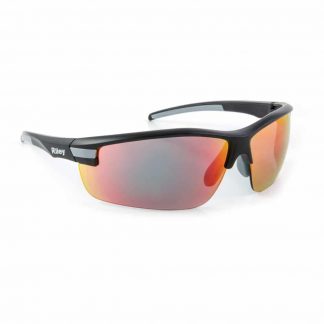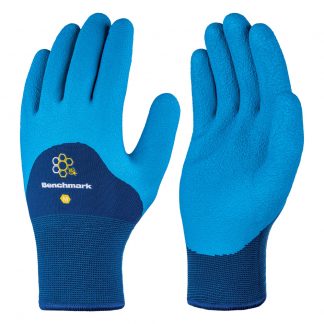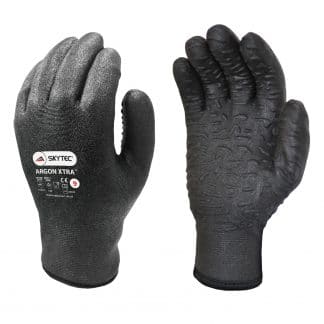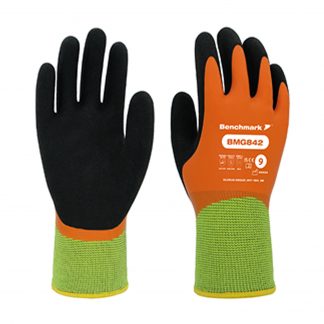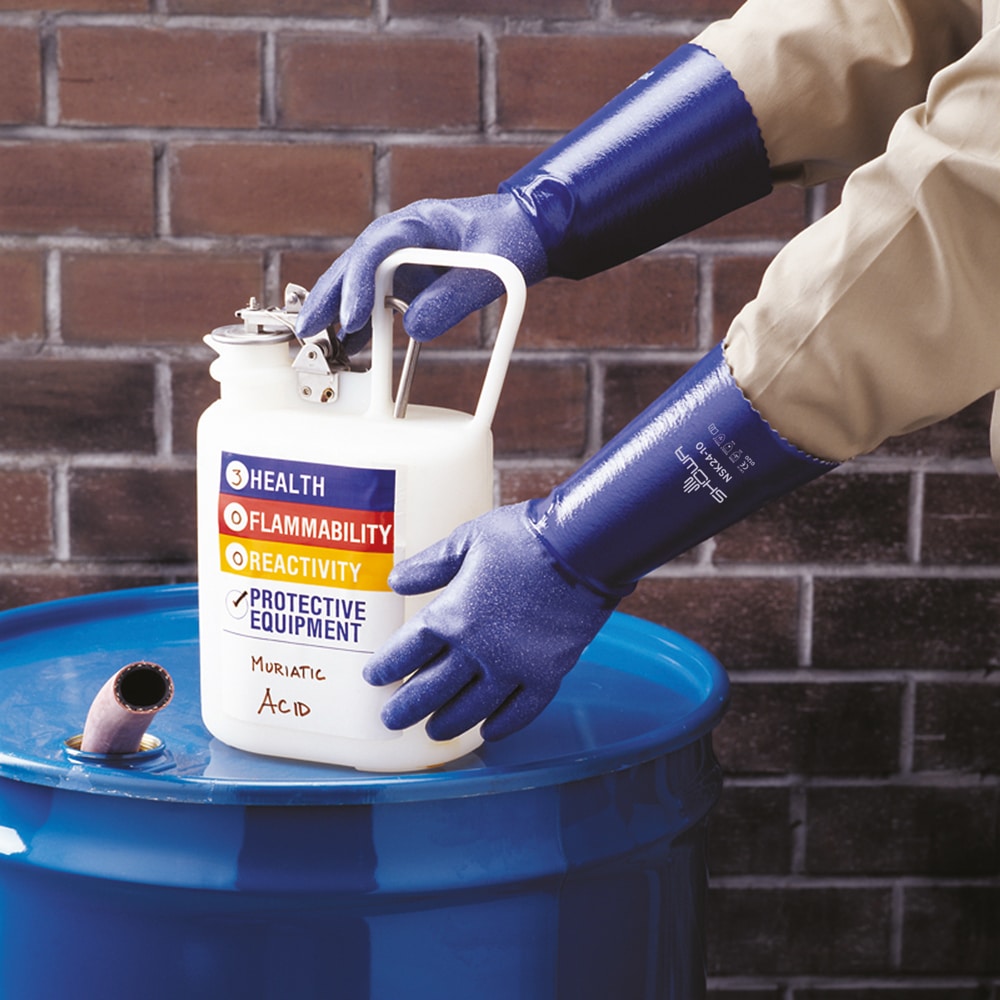
There are many industrial environments where chemicals are used on a daily basis. These chemicals can be extremely harmful to health and the correct PPE is vital for your safety. When dealing with hazardous chemicals you need the right protective gloves, and our range of gloves ensures your fully protected when using a wide range of chemicals. There are different gloves suitable for different environments and materials and we’re looking more closely at the different types of protection available, ensuring you can find the right one in our range.
Chemical-Resistant Gloves
Chemical-resistant gloves are tested to a standard. This standard is called EN 374 and it informs the wearer which chemicals the gloves are designed to protect against. The standard also lays out how long you can wear the gloves safely. We’re looking more closely at EN 374 below so you can choose the right protective chemicals gloves for your environment.
Understanding EN 374
EN 374 is a recognised standard to show something gives chemical protection. It is regularly updated to reflect the latest information and research into chemical resistance. It tests gloves response to a wide range of different chemicals, taking into account a range of factors including breakthrough time and permeability. The standard splits into five sections:
- EN 374 – 1: Protective Gloves Against Chemicals and Micro-Organisms
- EN 374 – 2: Determination to Resistance to Penetration
- EN 374 – 3: Determination of Resistance to Permeation by Chemicals (replaced by EN 16523)
- EN 374 – 4: Determination of Resistance to Degradation by Chemicals
- EN 374 – 5: Terminology and Performance Requirements for Micro-Organism Risks
Chemicals gloves are tested against each section to ensure their overall effectiveness and suitability.
Choosing the right gloves for the right chemicals
Certain gloves are only suitable for use with certain chemicals, and they will be provided with a symbol which shows which chemicals it is suitable to use with. This table shows the full breakdown of chemicals and their code to cross reference with the symbol provided with your gloves, either printed directly on them or on their packaging:
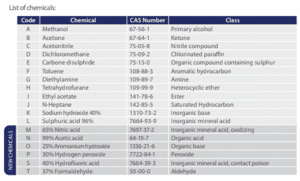
This symbol shows the chemicals a glove can be used for and also how long it is safe to use it for too:
The letters beneath the symbol denote the chemicals it is safe to use it with and “Type A” explains how long the gloves will remain chemical resistant as the EN 374 standard explains there are three different types of glove:
- Type A: Protective glove with permeation resistance of at least 30 minutes with at least six test chemicals
- Type B: Protective glove with permeation resistance of at least 30 minutes with at least three test chemicals
- Type C: Protective glove with permeation resistance of at least 10 minutes with at least one test chemical
Therefore, the glove in the example above has permeation resistance of at least 30 minutes with at least three test chemicals and the chemicals tested are N-Heptane (J), Sodium hydroxide (K) and Sulphuric acid (L). Finding the right gloves for your work environment is vital to ensuring you have the level of protection required.
EN 374 chemical protection gloves provide hand protection certified to a European standard. This means these are amongst the safest gloves you will find. They are backed up by resilient testing and our range of chemical gloves are all EN 374 standard, with varying resistances and permeations available. Explore our range here.



